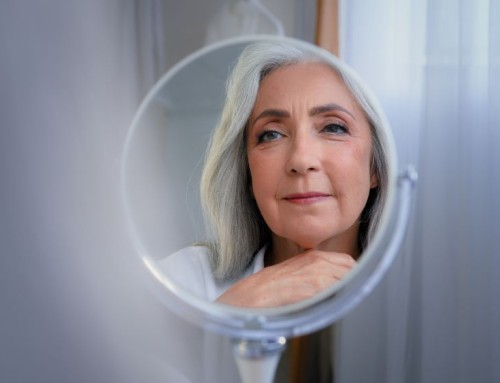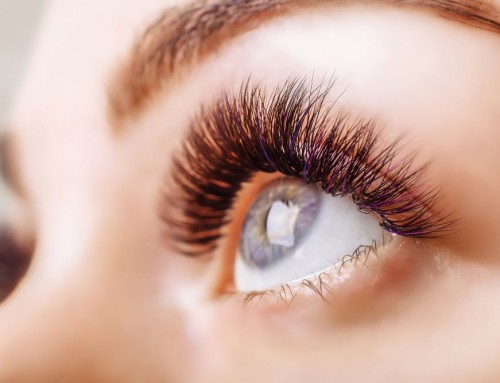Brachioplasty Surgery: Reduce Sagging Arm Skin
If you are tired of sagging skin in your upper arms, brachioplasty surgery might be an option to consider. For this procedure, we reshape the skin from your elbow to your armpit, removing excess skin and fat to create a more contoured look.
Why Does Arm Skin Sag?
Several factors can cause arm skin to sag. For instance, weight fluctuations can cause the arm skin to sag, so if you’ve lost a good amount of weight you might notice this issue despite diligent exercise. In some cases, it’s simply hereditary, and for many older adults, this begins to happen as we age because our skin loses some of its elasticity.
Can You Fix Sagging Skin Without Surgery?
In some cases, you certainly can. For instance, for some people, targeted exercises that work to build muscle in the upper arms can reduce the appearance of excess fat and create a smoother look. Working with a professional trainer or at least consulting with a pro can ensure that the exercises you use are targeting the areas of concern.
In some cases, though, exercise alone simply cannot address the issue of sagging skin and you need to consider other measures. Some of our patients opt for ThermiTight® treatments to reduce the appearance of sagging skin, especially if the sagging is not yet too severe.
ThermiTight® is a non-surgical procedure that uses radiofrequency energy to help stimulate collagen production. This, in turn, helps the skin gain back some of that elasticity. The result is a smoother, more contoured look in your upper arms. ThermiTight® can be used to contour the skin in many other areas, as well, including the neck, abdomen, breasts, thighs, and knees. ThermiTight® treatments can last for several years, which makes them an excellent, non-invasive option for many of our patients.
Still, for some patients, surgery can be the best option, especially if your skin is a bit too saggy for ThermiTight® to be effective. In these cases, we will recommend arm lift surgery, which is formally known as a brachioplasty.
Who Is A Good Candidate For Brachioplasty?
Not everyone is a good candidate for brachioplasty. If your weight tends to fluctuate or you are significantly overweight, you probably are not a good candidate for this surgery. Some medical conditions, particularly those that affect the immune system, also might prevent you from being a good candidate for brachioplasty surgery. Additionally, we don’t recommend this procedure for smokers, as smoking significantly impacts the body’s ability to heal.
However, if you are a healthy individual at a relatively healthy and stable weight, this can be a good option to consider. It is important to have realistic expectations about the procedure and the results, which typically are permanent if you maintain a good diet and exercise routine. Of course, as we continue to age, our skin may lose some firmness, but generally, you can expect the brachioplasty results to last for many years.
Brachioplasty Surgery: The Procedure
Brachioplasty surgery typically is an outpatient procedure, but you will need someone to drive you to the surgical center and back home. Additionally, it is recommended that you have someone stay with you on that first night after surgery.
We use either general anesthesia or intravenous anesthesia and Dr. Thaxton will talk about both of these options during your consultation. Once you are anesthetized, we will make our incisions, which we typically make on the inside or back of your arm, although sometimes we can simply make a smaller incision near your armpit. The surgical approach we use tends to depend on how much excess skin and fat will be removed and the location of the skin and fat.
During the procedure, we remove excess fat and then work to tighten and reshape the arm’s supportive tissue. We then smooth and replace the skin and close up the incisions. Bandages will be applied to the area, and we often use compression bandages to help reduce swelling. A drain may be put into place as well for a day or two to remove excess fluid or blood. The drain also helps prevent swelling.
Brachioplasty Recovery:
Brachioplasty is considered major surgery, so you will need to be prepared to take it easy and rest for about a week. This means no driving and taking time off work, and ensuring that you do not exert yourself, particularly your arms. Follow all of your recovery instructions carefully as these will ensure that you recover as quickly as possible.
Generally, after about a week you can return to work, but you still should avoid heavy lifting and exercise for about six weeks or more. While bandages and your stitches may be removed, we usually do ask patients to wear a compression garment to continue to help reduce swelling. It can take about a month for all of the swelling to abate. Scarring will be fairly apparent at first, but this also should fade significantly over the course of a few months.
Most patients are extremely satisfied with the results of their brachioplasty, and while there is swelling after the procedure, you will be able to see immediate results. Once you are cleared to exercise fully, staying in good shape can help you maintain the results for the long term.
Dr. Thaxton is certified by the American Board of Plastic Surgeons and is a member of the American Society for Aesthetic Plastic Surgery and can provide you with many surgical options to help you look and feel your best. This includes brachioplasty, as well as breast augmentation, Mommy Makeovers, rhinoplasty, face lifts, and more.
If you are interested in learning more about a brachioplasty or perhaps want to ask about ThermiTight®, feel free to give the team at Thaxton Plastic Surgery a call at any time. In addition to our surgical procedures, we also offer many non-surgical procedures such as lip fillers, Coolsculpting, Dermaplaning, miraDry, and much more.






